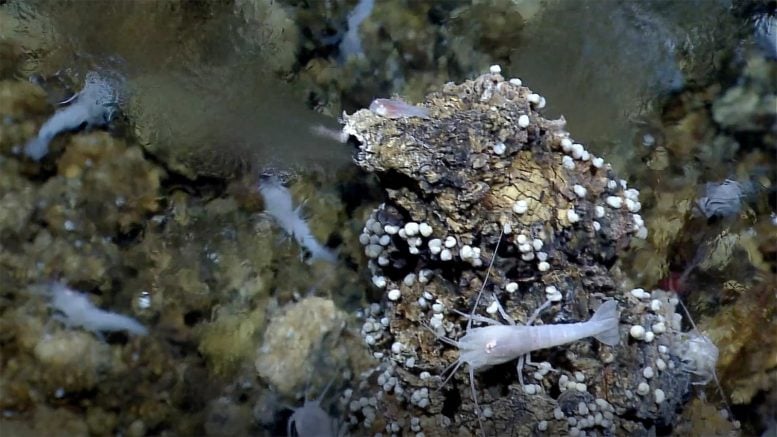
A seafloor vent called a “white smoker” spews mineral-rich water into the ocean and serves as an energy hub for living creatures. Some scientists think life on Earth may have begun around similar vents on the ocean floor billions of years ago. Credit: NOAA/C. German (WHOI)
By mimicking rocky seafloor chimneys in the lab, scientists have produced new evidence that these features could have provided the right ingredients to kick-start life.
Where did life first form on Earth? Some scientists think it could have been around hydrothermal vents that may have existed at the bottom of the ocean 4.5 billion years ago. In a new paper in the journal Astrobiology, scientists at NASA’s Jet Propulsion Laboratory describe how they mimicked possible ancient undersea environments with a complex experimental setup. They showed that under extreme pressure, fluid from these ancient seafloor cracks mixed with ocean water could have reacted with minerals from the hydrothermal vents to produce organic molecules — the building blocks that compose nearly all life on Earth.
In particular, the research lays important groundwork for in-depth studies of such ocean worlds as Saturn’s moon Enceladus and Jupiter’s moon Europa, which are both thought to have liquid-water oceans buried beneath thick icy crusts and may host hydrothermal activity similar to what’s being simulated at JPL. This area of research belongs to a field of study known as astrobiology, and the work was done by the JPL Icy Worlds team as part of the former NASA Astrobiology Institute.
Some scientists think the story of life on Earth may have started around hydrothermal vents at the bottom of the ocean 4.5 billion years ago. Scientists at NASA’s Jet Propulsion Laboratory mimicked those ancient undersea environments with a complex experimental setup.
Under the Ancient Sea
To simulate conditions that might have existed on the ocean floor of a newly formed Earth, before the sea teemed with life, then-graduate student Lauren White and colleagues conducted an experiment that brought together three key ingredients: hydrogen-rich water, like the kind that could have flowed out from beneath the seafloor through vents; seawater enriched with carbon dioxide, as it would have been from the ancient atmosphere; and a few minerals that might have formed in that environment.
White and colleagues — including her graduate advisor, retired JPL scientist Michael Russell — simulated vents that didn’t spew particularly hot water (it was only about 212 Fahrenheit, or 100 degrees Celsius). One major challenge with creating the experimental setup was maintaining the same pressure found 0.6 miles (1 kilometer) below the ocean surface — about 100 times the air pressure at sea level. Previous experiments have tested similar chemical reactions in individual high-pressure chambers, but White and her colleagues wanted to more fully replicate the physical properties of these environments, including the way the fluids flow and mix together. This would require maintaining the high pressure in multiple chambers, which added to the complexity of the project. (Because a crack or leak in even a single high-pressure chamber poses the threat of an explosion, it’s a standard operating procedure in such cases to install a blast shield between the apparatus and the scientists.)
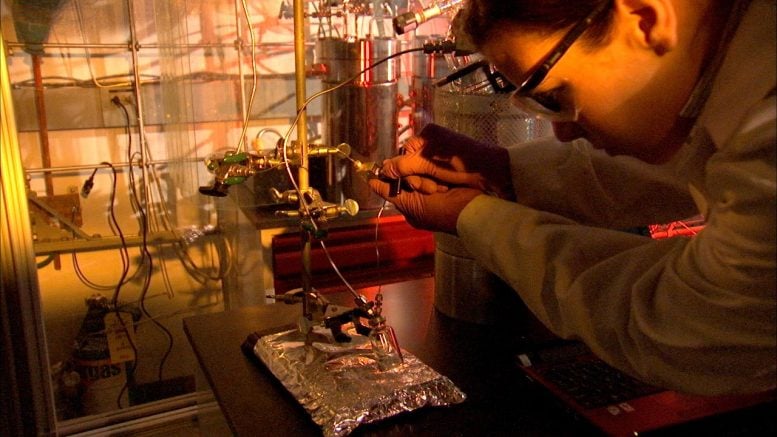
Lauren White, a scientist at NASA’s Jet Propulsion Laboratory, adjusts an experiment that simulates how ancient seawater and fluid from hydrothermal vents could have reacted with minerals from the seafloor to create organic molecules 4.5 billion years ago. The image was taken at JPL in 2014. Credit: NASA/JPL-Caltech
The scientists wanted to determine whether such ancient conditions could have produced organic molecules — those containing carbon atoms in loops or chains, as well as with other atoms, most commonlyhydrogen. Examples of complex organic molecules include amino acids, which can eventually form DNA and RNA.
But just as eggs, flour, butter, and sugar aren’t the same thing as a cake, the presence of both carbon and hydrogen in the early oceans doesn’t guarantee the formation of organic molecules. While a carbon and a hydrogen atom might reasonably bump into each other in this prehistoric ocean, they wouldn’t automatically join to form an organic compound. That process requires energy, and just like a ball won’t roll up a hill by itself, carbon and hydrogen won’t bind together without an energetic push.
A previous study by White and her colleagues showed that water pulsing through hydrothermal vents could have formed iron sulfides. By acting as a catalyst, iron sulfides could provide that energetic push, lowering the amount of energy required for carbon and hydrogen to react together, and increasing the likelihood they would form organics.
The new experiment tested whether this reaction would have been likely to occur under the physical conditions around ancient seafloor vents, if such vents existed at the time. The answer? Yes. The team created formate and trace amounts of methane, both organic molecules.
Signs of Life
Naturally occurring methane on Earth is produced largely by living organisms or through the decay of biological material, including plants and animals. Could methane on other planets also be a sign of biological activity? To use methane to search for life on other worlds, scientists need to understand both its biological and non-biological sources, such as the one identified by White and her colleagues.
“I think it’s really significant that we showed that these reactions take place in the presence of those physical factors, like the pressure and the flow,” said White. “We are still a long way from demonstrating that life could have formed in these environments. But if anyone ever wants to make that case, I think we’ll need to have demonstrated the feasibility of every step of the process; we can’t take anything for granted.”
The work builds on Michael Russell’s hypothesis that life on Earth may have formed at the bottom of Earth’s early ocean. The formation of organic molecules would be a major step in this process. Scientists in the same JPL research group have explored other aspects of this work, such as replicating the chemical conditions in the early ocean to demonstrate how amino acids might form there. However, the new study is unique in the way it recreated the physical conditions of those environments.
In the next few years, NASA will launch Europa Clipper, which will orbit Jupiter and perform multiple flybys of the icy moon Europa. Scientists believe plumes there may spew water into space from the moon’s ocean, which lies beneath about 2 to 20 miles (3 to 30 kilometers) of ice. These plumes could provide information about possible hydrothermal processes at the bottom of the ocean, thought to be about 50 miles (80 kilometers) deep. The new paper contributes to a growing understanding of the chemistry that might take place in oceans other than our own, which will help scientists interpret the findings of that mission and others to come.
Reference: “Simulating Serpentinization as It Could Apply to the Emergence of Life Using the JPL Hydrothermal Reactor” by Lauren M. White, Takazo Shibuya, Steven D. Vance, Lance E. Christensen, Rohit Bhartia, Richard Kidd, Adam Hoffmann, Galen D. Stucky, Isik Kanik and Michael J. Russell, 2 March 2020, Astrobiology.
DOI: 10.1089/ast.2018.1949

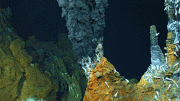
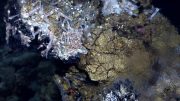
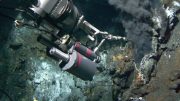
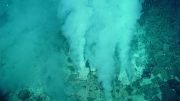


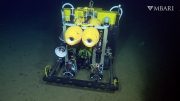
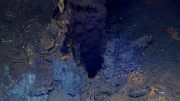
Wrote a, Paper and then a book on this subject twenty years ago and as with all of my writings, I registered it with the, ‘Copyright Fraud Bureau’, because I knew, just as with all of my other work, I would never see it published whilst, Hawking’s in-laws were running their publishing empire and controlling all that got published in the UK.
If there are any out there prepared to go against ‘The In-Laws’; Please contact me at; [email protected]